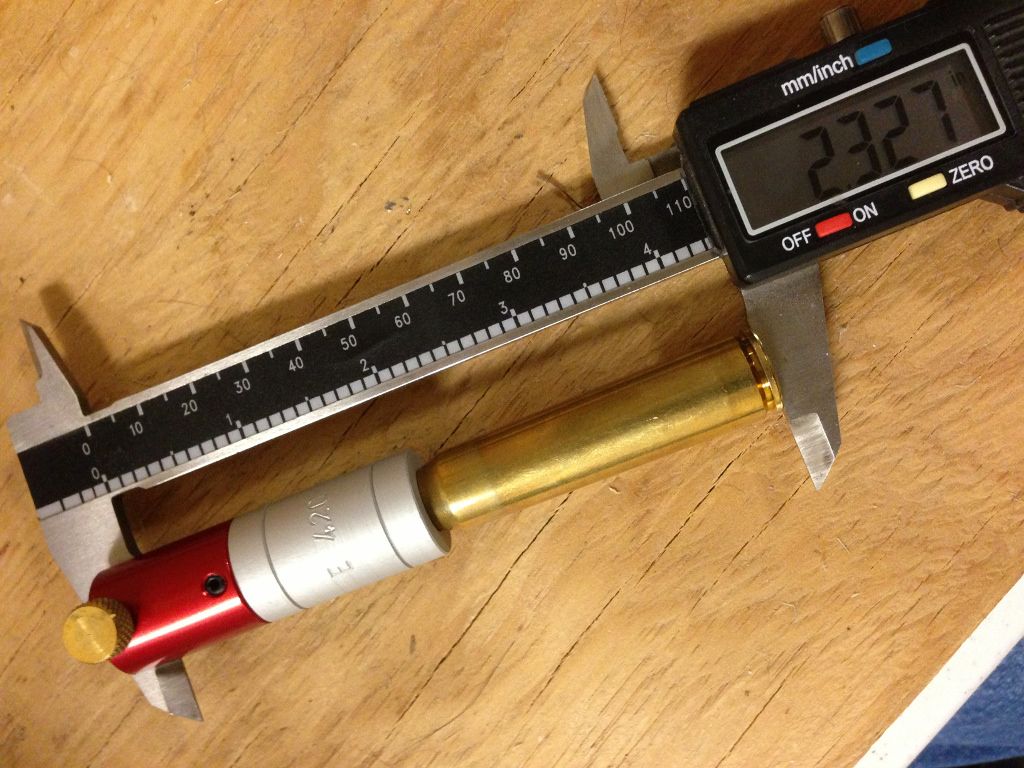I have some Lapua 338LM brass that only gets fired out of one gun, a TRG42. I've been neck sizing only.
Using a Hornady comparator, I've measured the case length to the shoulder and (unsurprisingly) the brass is growing. Random sample of cases:

Should I just leave it be until it gets hard to close the bolt, then knock it back a couple thousandths from whatever it is then?
Using a Hornady comparator, I've measured the case length to the shoulder and (unsurprisingly) the brass is growing. Random sample of cases:
Code:
fired AVG 1 2 3 4 5 6 7 8 9 10
0x 2.3224 2.322 2.321 2.322 2.322 2.324 2.323 2.322 2.322 2.324 2.322
1x 2.3267 2.327 2.326 2.327 2.327 2.327 2.327 2.327 2.326 2.327 2.326
2x 2.3284 2.329 2.329 2.328 2.329 2.329 2.328 2.328 2.328 2.328 2.328
Should I just leave it be until it gets hard to close the bolt, then knock it back a couple thousandths from whatever it is then?

